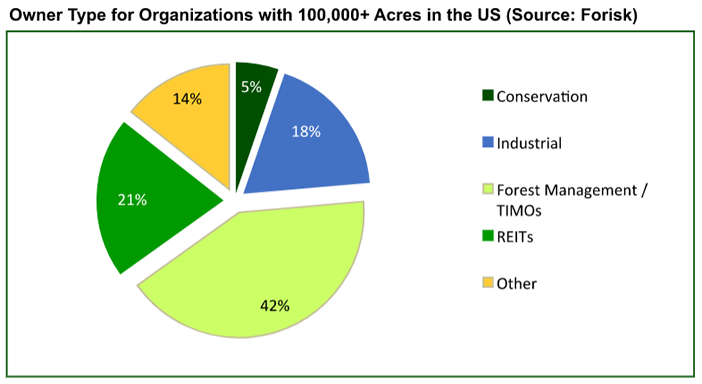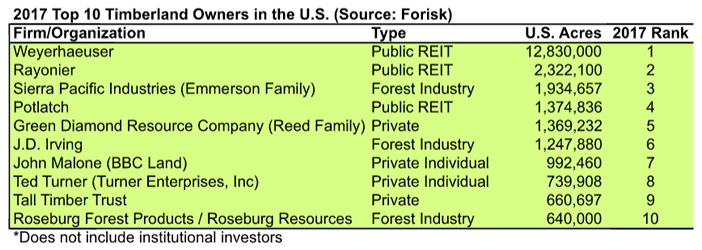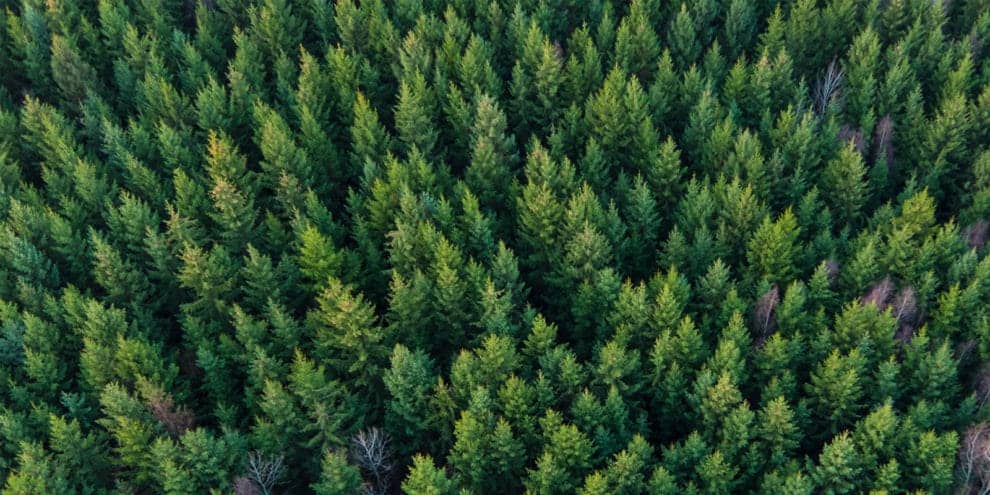Tangible and “globally secure” assets attract investors during periods of economic and political uncertainty. As The Wall Street Journal reported in April 2017 (“Investors Shift Gears Amid Turmoil,” 4/21/17), gold prices reached their highest levels since November 2016, the yen continues to strengthen, and U.S. Treasuries continue to climb. These “haven assets” gain ground as volatility drives investors to safety. And trends for timberland investments indicate that forest assets benefit from this shift.
Forisk has been accumulating timberland transaction and ownership data for the past twelve years. The ownership data goes back 50 years and the transaction data goes back 20 years to 1996. This provides context when reviewing year-over-year trends. So what have we seen since Forisk’s 2016 update? The last four quarters produced nearly 3 million acres of institutional timberland transactions, maintaining the strong post-recession pace. TIMOs participated in more transactions by count, as either buyer or seller, than those of public timber REITs and forest industry firms combined. The dominant presence of TIMOs and REITs as buyers and sellers speaks to the maturity of the sector, as investors evaluate the appropriate role for timberland in their portfolios.
Breaking Down Industrial Timberland Ownership
The operational resources required to manage industrial timberlands skew the ownership in North America to larger firms. Of the 105 million timberland acres tracked by Forisk, 83.1 million (79%) acres are with 114 organizations that own or manage 100,000 acres or more each in the United States. The pie chart breaks down the 100,000+ acre owners in the U.S. by type. Forest managers and TIMOs (timberland investment managers) represent 42% of these acres, while public timber REITs account for 21%. Industrial owners, those with manufacturing activities in and outside of the forest industry that don’t qualify as REITs, hold 18% of these timberland assets.

Largest Timberland Owners and Managers in the U.S.
The table below lists the 2017 top 10 U.S. timberland owners by acres. Overall, the ranking “order” remained relatively unchanged from 2016 while the composition changed with the addition of two firms. First, Green Diamond joined the list after we reclassified the firm from asset “manager” to asset “owner.” Second, Tall Timber Trust, not on the list in 2016, comes in at number nine (9) this year after acquiring 290,000 acres in Maine in 2016. Overall, these 10 owners of U.S. timberland have 24.1 million acres; timber REITs account for 68.5% of this total. This does not include the approximately 3.0 million acres directly and indirectly controlled by the two largest non-profit conservation owners.

When looking separately at the top 10 timberland managers, TIMOs, who manage timber assets on behalf of institutional investors and large private investors, hold seven slots; these seven TIMOs manage 16.7 million acres, or 65.7% of the 25.4 million acres managed by the top 10 firms. The key change since 2016 was Forest Investment Associates (FIA) moving up to number 4 from 6, and Campbell Global moving down to number 6 from 4. Three forestry consulting and management firms, including the largest organization on this list (American Forest Management), account for the balance.
This content may not be used or reproduced in any manner whatsoever, in part or in whole, without written permission of LANDTHINK. Use of this content without permission is a violation of federal copyright law. The articles, posts, comments, opinions and information provided by LANDTHINK are for informational and research purposes only and DOES NOT substitute or coincide with the advice of an attorney, accountant, real estate broker or any other licensed real estate professional. LANDTHINK strongly advises visitors and readers to seek their own professional guidance and advice related to buying, investing in or selling real estate.










Add Comment